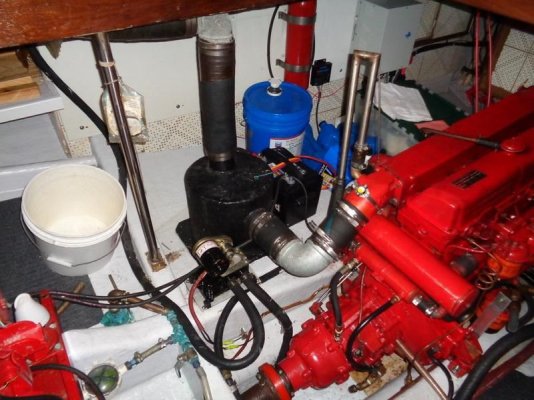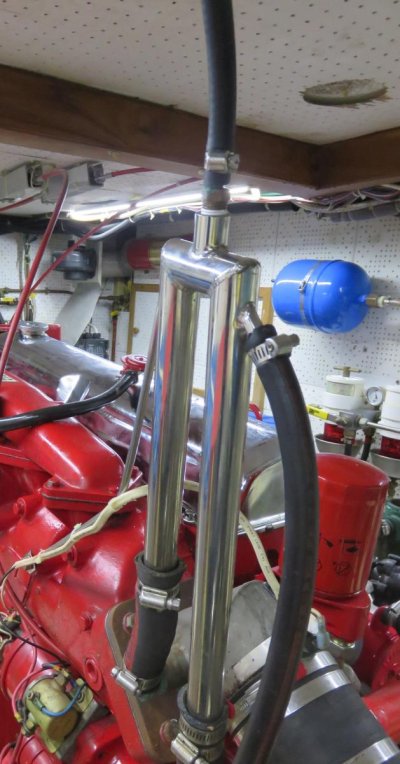Further to my earlier post about an anti siphon valve, let me elaborate:
Virtually all sailboats have a vented loop with an anti siphon valve. On sailboats the water injection point is often below the water line. In this case when the engine stops, water can continue to siphon. So boat builders put a loop in the hose just before the mixer and an anti siphon valve which is nothing more than a check valve with a very weak spring that will break the vacuum.
In Larry's photo the small diameter hose at the top of the SS loop that exits well above the water line does the same thing but without a valve.
In your case, Bill the builder didn't really know what he was doing, he had seen other installations and he thought he was doing the same thing. But without a vent of some sort, it will not necessarily break the vacuum.
So first check the height above or below the water line where the water squirts out of the mixer. If it is a few inches above the water line, then forget it, you don't need anything. If it is below, then consider adding a vent- either out the side of the boat like Larry's or much easier with an anti siphon valve like this one:
Forespar MF-841 Replacement Duck Bill / Cap Assembly
You will probably have to drill and tap the top of the loop for a 1/4" pipe thread. Then install the anti siphon valve with a 1/4" SS nipple.
I know that the foregoing was more than most of you wanted to know about anti syphon loops and I am probably showing off a bit by posting all of this drivel, but the OP wanted to know, so now he has it.
David



